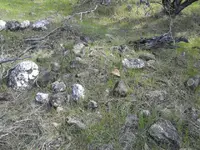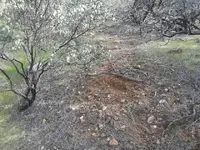californiagold
Sr. Member
- Joined
- Aug 7, 2014
- Messages
- 314
- Reaction score
- 761
- Golden Thread
- 0
- Location
- California goldfields
- Detector(s) used
- Makro Gold Racer, Nokta Fors gold plus, Makro racer2, Nokta fors gold, minelab gpx5000, fisher gold bug pro and many many others
- Primary Interest:
- Prospecting
Hello,
I headed back out to my old channel diggings with Gold Racer to try some new area. The gold was pretty sporadic. No place turned into a good patch. Gold Racer operated really good and found over 6 dwt. I will have to try the area again soon to try to get a good patch going.
I headed back out to my old channel diggings with Gold Racer to try some new area. The gold was pretty sporadic. No place turned into a good patch. Gold Racer operated really good and found over 6 dwt. I will have to try the area again soon to try to get a good patch going.
Attachments
Upvote
0







 don't feed the bears bud-great nuggets as usual-John
don't feed the bears bud-great nuggets as usual-John